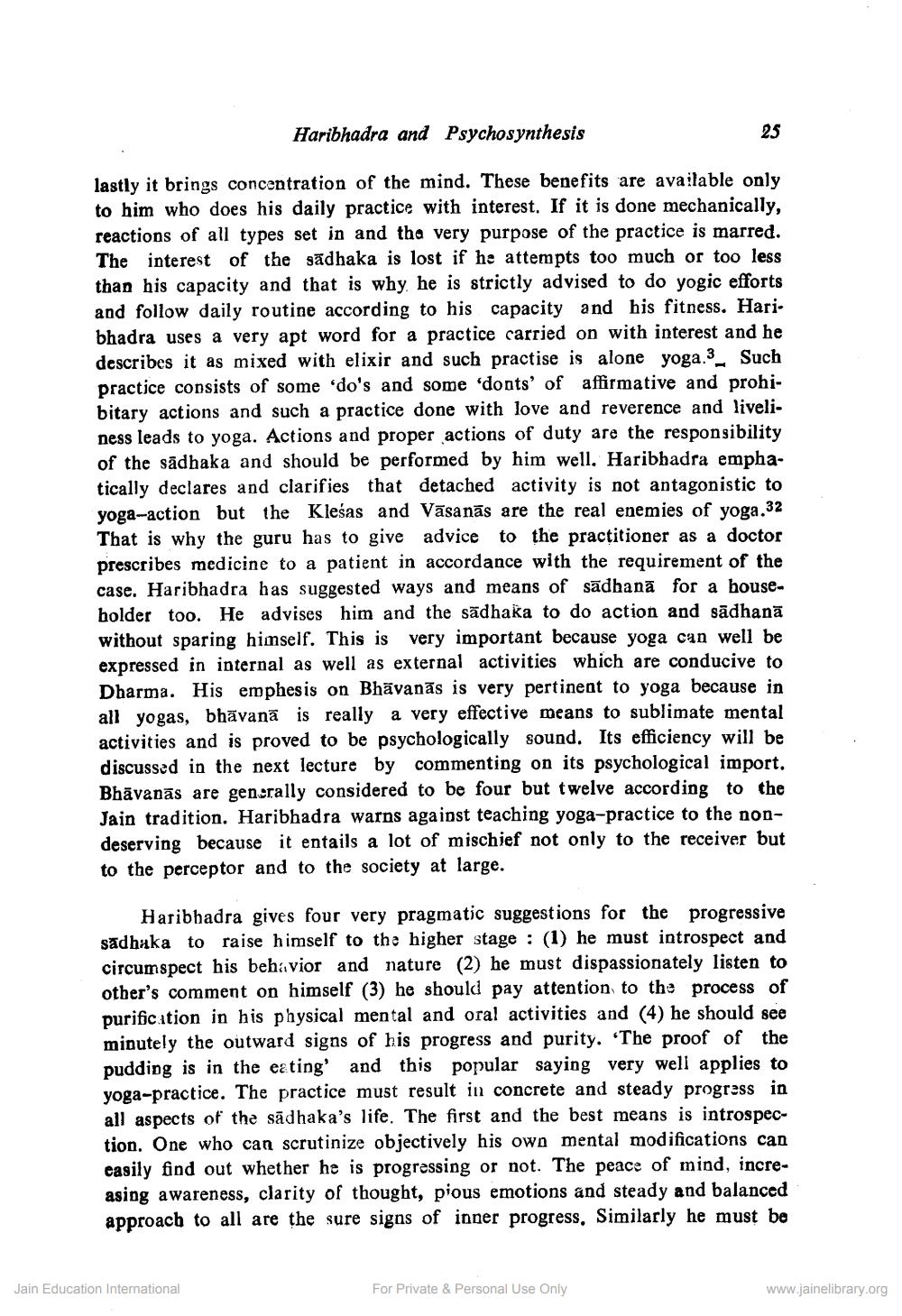________________
Haribhadra and Psychosynthesis
lastly it brings concentration of the mind. These benefits are available only to him who does his daily practice with interest. If it is done mechanically, reactions of all types set in and the very purpose of the practice is marred. The interest of the sädhaka is lost if he attempts too much or too less than his capacity and that is why he is strictly advised to do yogic efforts and follow daily routine according to his capacity and his fitness. Haribhadra uses a very apt word for a practice carried on with interest and he describes it as mixed with elixir and such practise is alone yoga.3 Such practice consists of some 'do's and some 'donts' of affirmative and prohibitary actions and such a practice done with love and reverence and liveliness leads to yoga. Actions and proper actions of duty are the responsibility of the sadhaka and should be performed by him well. Haribhadra emphatically declares and clarifies that detached activity is not antagonistic to yoga-action but the Kleśas and Vasanās are the real enemies of yoga.32 That is why the guru has to give advice to the practitioner as a doctor prescribes medicine to a patient in accordance with the requirement of the case. Haribhadra has suggested ways and means of sadhana for a householder too. He advises him and the sadhaka to do action and sadhanā without sparing himself. This is very important because yoga can well be expressed in internal as well as external activities which are conducive to Dharma. His emphesis on Bhāvanas is very pertinent to yoga because in all yogas, bhavana is really a very effective means to sublimate mental activities and is proved to be psychologically sound. Its efficiency will be discussed in the next lecture by commenting on its psychological import. Bhāvanās are generally considered to be four but twelve according to the Jain tradition. Haribhadra warns against teaching yoga-practice to the nondeserving because it entails a lot of mischief not only to the receiver but to the perceptor and to the society at large.
25
Haribhadra gives four very pragmatic suggestions for the progressive sadhaka to raise himself to the higher stage (1) he must introspect and circumspect his behavior and nature (2) he must dispassionately listen to other's comment on himself (3) he should pay attention to the process of purification in his physical mental and oral activities and (4) he should see minutely the outward signs of his progress and purity. The proof of the pudding is in the eating' and this popular saying very well applies to yoga-practice. The practice must result in concrete and steady progress in all aspects of the sädhaka's life. The first and the best means is introspection. One who can scrutinize objectively his own mental modifications can easily find out whether he is progressing or not. The peace of mind, increasing awareness, clarity of thought, pious emotions and steady and balanced approach to all are the sure signs of inner progress. Similarly he must be
Jain Education International
For Private & Personal Use Only
www.jainelibrary.org




